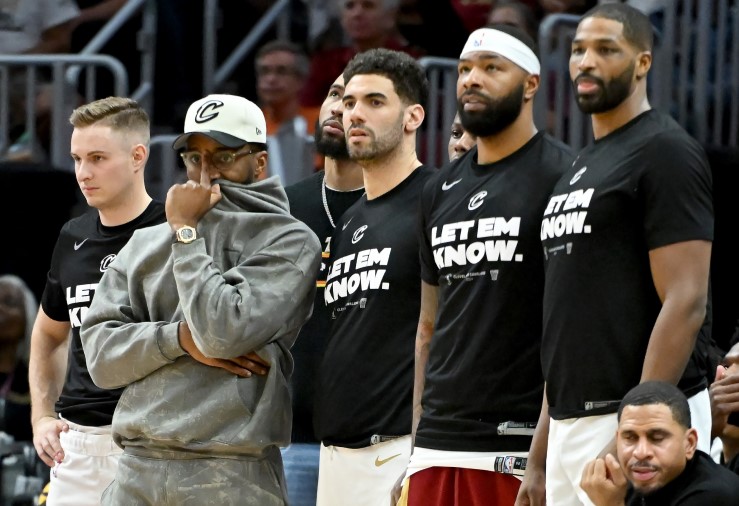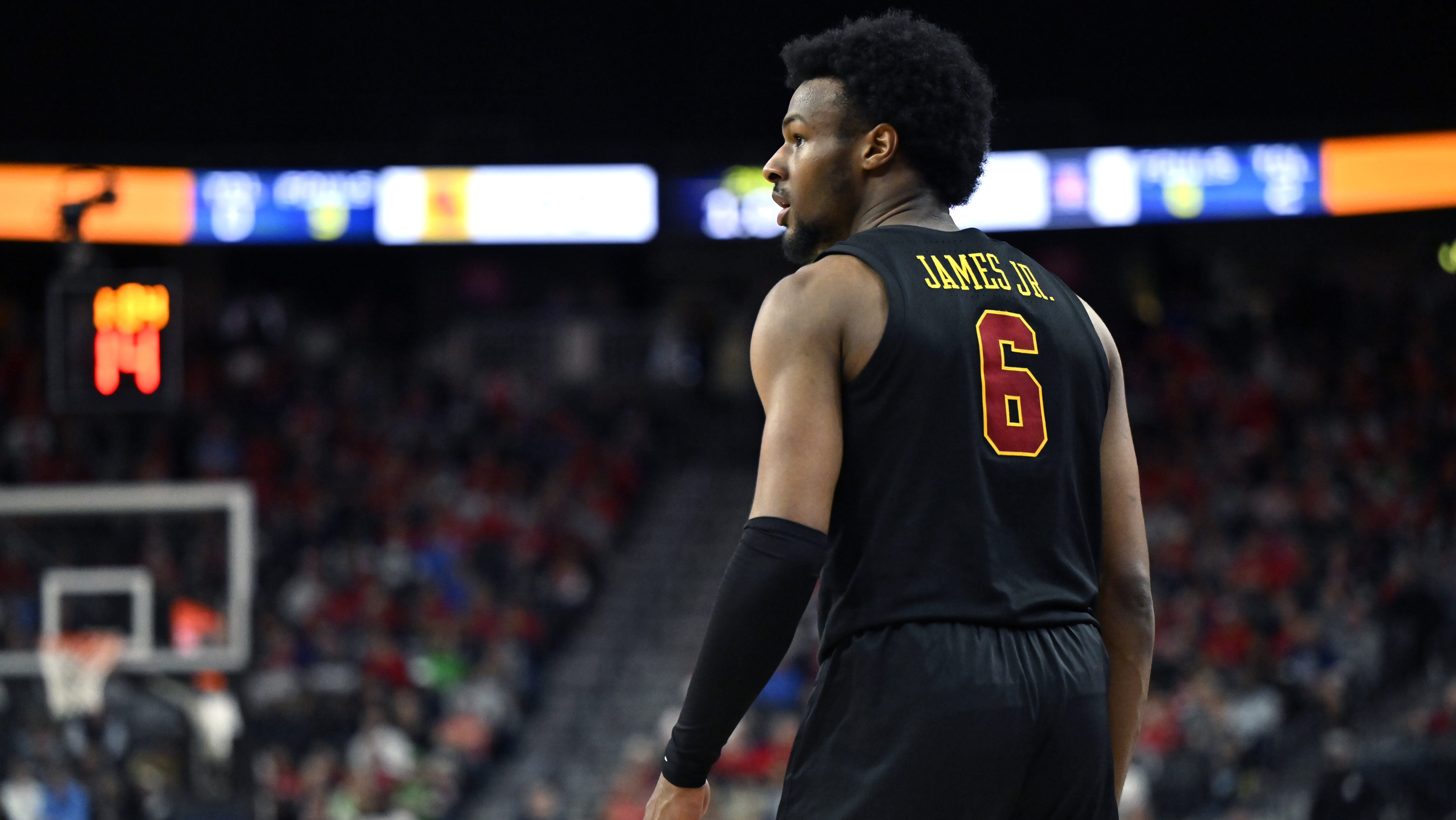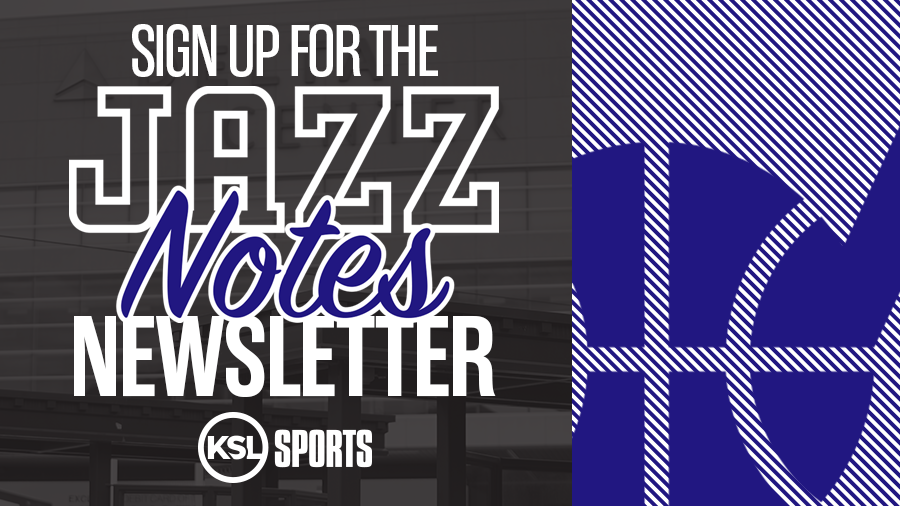Why Did The Jazz Trade For John Collins?
Jun 27, 2023, 3:49 PM | Updated: 11:35 pm
SALT LAKE CITY – The Utah Jazz made a major addition to the lineup when they traded Rudy Gay and a second-round pick to the Atlanta Hawks for forward John Collins.
Collins has long been rumored as a Jazz target, and after more than a year of speculation, the deal was finally consummated.
With the deal agreed upon, let’s explore how Collins fits in Utah, and how he changes the team’s outlook.
Why Did The Jazz Trade For John Collins?
The most pressing question after trading for Collins is how exactly he fits with the Jazz.
Positionally, Collins is the natural favorite to move into the team’s starting lineup between Walker Kessler and Lauri Markkanen at the power forward position.
Though Collins is the shortest player in the Jazz’s frontcourt, standing 6-foot-8, Markkanen has proven that he’s best suited on the perimeter operating in more of a traditional small forward position, setting up Collins to operate as an off-ball four.
Beyond that, his role becomes slightly more questionable.
After shooting just 29 percent from the three-point line last season, Collins’ ability, or inability to space the floor, will go a long way toward determining his responsibilities on offense.
Early JC 3 ball pic.twitter.com/Xpt1TfkoPB
— Atlanta Hawks (@ATLHawks) March 28, 2023
If Collins can no longer be counted on as a reliable floor spacer, his offensive production will be heavily dependent on the pick and roll and in transition.
That is less ideal for the Jazz, who already have Kessler eating up the majority of the pick-and-roll opportunities in the starting lineup, leaving Collins in a similarly diminished role to the one he played in Atlanta alongside Clint Capela.
Additionally, the modern NBA is heavily reliant on maximizing floor spacing, and if Collins’ shooting percentages don’t rebound, the lack of spacing in the Jazz’s frontcourt will hurt the production of both Markkanen and Kessler.
But, that is the worst-case scenario, and there are several reasons for optimism regarding Collins’ shooting.
First, he’s a career 35 percent three-point shooter and had shot better than 37 percent over the first five seasons of his career before last year’s dramatic downturn.
Second, a significant injury on the ring finger of his shooting hand caused Collins problems early in the year, but isn’t expected to have long-lasting implications.
His scoring numbers were still down (12.9 ppg) but over his last 20 games of the season John Collins shot a much improved 37% from three on 3.8 attempts per game in Atlanta.
Had shot just 25% over the first 51 games with his insane looking finger injury. pic.twitter.com/QEmUkXxFn4
— Ben Anderson (@BensHoops) June 26, 2023
Third, Collins’s shooting numbers improved considerably late in the season, both thanks to the improved health of his ring finger, and his adjusted role within Quin Snyder’s offense.
With Snyder calling the shots over the final 21 games of the season, Collins’ three-point shooting percentage jumped from 25 percent on 3.2 attempts per game to an impressive 38 percent on 3.8 per game
In the postseason, Collins’ numbers dipped slightly, but still hovered at a reasonable 34 percent on a high-volume 5.3 attempts per game.
Ideally, Collins’ three-point shooting percentage would rest in the high 30s next season, but even at 34-35 percent, he’s a dangerous weapon, especially when teamed with his high-efficiency scoring at the rim.
Luckily for the Jazz, even if he doesn’t see an upswing in shooting, they have several options in the frontcourt to pair with Collins to maximize his pick-and-roll capabilities.
Thank you, John Collins 🫡 pic.twitter.com/QNeqjzPFAf
— Abby Stolz (@abbystolz17) June 26, 2023
While Collins may start as a floor spacer next to Kessler, he could still get plenty of reps as the roll man or in the dunker spot if the Jazz retain Kelly Olynyk, and make him the team’s primary backup center.
If Olynyk isn’t retained by the Jazz, Damian Jones also flashed his floor spacing capabilities late last season, which could create room for Collins to operate near the rim with the second unit. Eventually, rookie Taylor Hendricks should also pair nicely with Collins as a floor spacer.
Though the Jazz may have preferred more of a pure floor spacer at the four, there are plenty of ways to keep Collins engaged to make the trade a worthwhile gamble.
Defensively, Collins’ size fits in well with the Jazz providing some switchability and an additional weakside shot blocker.
He’s certainly not a lockdown defender, but his athleticism and length are more than adequate next to Markkanen and Kessler, and the effort is reliable.
The Immediate Cost
The Jazz significantly underpaid for Collins, sending Gay’s negative value contract and a second-round pick to Atlanta for a heavy minute rotation player.
One signature of the Danny Ainge and Justin Zanik Jazz front office has been the desire to maintain, or increase the value of the team’s assets, and flipping Gay and a second-round pick for a player like Collins is an excellent upgrade over an otherwise valueless player.
Well that's an extremely low price to pay. https://t.co/8OE4l2hcev
— Ben Anderson (@BensHoops) June 26, 2023
Gay was one of the worst rotation players in the NBA last season, and at $6.5 million, it was difficult to justify him eating up a roster spot on a drastically overpriced contract.
It’s unlikely the 18-year veteran suits up in Atlanta, and his career may very well be over unless he finds a cash-strapped team looking for a veteran frontcourt player a la the Phoenix Suns or Boston Celtics.
John Collins Contract
Though the Jazz paid a low upfront cost with Collins, his long-term price point is a bit more difficult to swallow.
Collins is owed roughly $77 million over the next three seasons, including a player option valued at over $26 million in the final year of his deal.
After averaging just 13.1 points and 6.5 rebounds while shooting a poor 29 percent from the three-point line, it’s fair to say Collins is overpaid at his current level of production.
By acquiring the forward, the Jazz are hoping he can once again become the player he was when he signed a five-year, $125 million deal after averaging 19.2 points and 8.5 rebounds while shooting 40 percent from three during his third and fourth seasons in the NBA.
If Collins does see his production climb, he becomes a serious threat to opt out of the final year of his deal when he’ll be 27 years old and entering his prime, lowering the long-term cost for the Jazz.
However, even if Collins chooses to stay through the life of his deal, with the NBA’s expected $50 million jump in salary cap during the 2025-26 season, the newest Jazzman’s deal is far from egregious.
The Jazz sacrificed some cap flexibility with the addition of Collins over the next few seasons, but can still be active in free agency for below-max players.
The Cost Timeline
While Collins’ price might be high based on his production last season, the financial structure of his deal fits in line with the Jazz’s current timeline.
After reportedly missing out on the opportunity to pursue Kristaps Porzingis in free agency, the Jazz pivoted to another frontcourt option before the market truly opened on July 1.
While there is some sticker shock with Collins pricetag, the length of his deal matches up well with the Jazz’s existing contracts.
With no other player on the Jazz currently set to earn more than $20 million over the next three seasons, the Jazz aren’t hampered by any major deals already on the books.
A look at the John Collins trade and how it impacts Atlanta/Utah. https://t.co/wGZkraUbuU
via @YouTube
— Bobby Marks (@BobbyMarks42) June 26, 2023
Lauri Markkanen will become an unrestricted free agent in the summer of 2026, coinciding with the final year of Collins’ current deal.
If Collins opts in, and the Jazz were to sign Marrkanen to a max-level contract, the team would be on the hook for roughly $95 million between the two frontcourt players and guard Collin Sexton during the 2026-27 season with a projected $175 million salary cap.
But, in the summer of 2027, both Collins and Sexton would hit free agency, just as Walker Kessler and Ochai Agbahi become eligible for rookie extensions, allowing the Jazz to avoid luxury tax implications.
Would Other Options Have Been Better Than Collins?
The Jazz have had rumored interest in both Kyle Kuzma and Harrison Barnes in recent years, but even with competitive offers, wouldn’t have a guarantee that either pending free agency would sign in Utah.
Barnes has developed into a steady floor-spacing forward who would fit in with the Jazz’s current lineup, but at 31 years old, doesn’t fit the long-term timeline, and lacks Collins’ upside.
The Jazz may have been able to land Barnes at a slightly lower cost (think $17-20 million) over the next three seasons but would have still been saddled with Gay’s deal for one more year.
At 27 years old, Kuzma, fits the Jazz’s rebuilding timeline better than Barnes, but his cost is likely to match or exceed Collins’ $25 million, and his deal could be longer than three years.
Former @UtahMBB star Kyle Kuzma will opt out of his deal with the @wizards and hit free agency in July. https://t.co/0QORB0k9Wy
— KSL Sports (@kslsports) June 20, 2023
Kuzma is coming off the best season of his career, averaging a career-high 21.2 points while adding 7.2 rebounds, but his 33 percent success rate from the three-point line is two percentage points below Collins, and he’s two years older.
The Jazz could also have kicked the tires on Jerami Grant, Christian Wood, or Grant Williams, but none of the three would have come at a great discount, and they aren’t sure things to sign in Utah.
Ultimately, the Jazz could have tested free agency in hopes of luring a similar forward at a lower cost but were able to avoid those bidding wars, and can now turn their attention elsewhere.
The Jazz are more talented with Collins than they were with Gay, and even at an above-market price tag, upped their ability to win games while maintaining long-term flexibility.
Ben Anderson is the Utah Jazz insider for KSL Sports and the co-host of Jake and Ben from 10-12p with Jake Scott on 97.5 The KSL Sports Zone. Find Ben on Twitter at @BensHoops or on Instagram @BensHoops.












